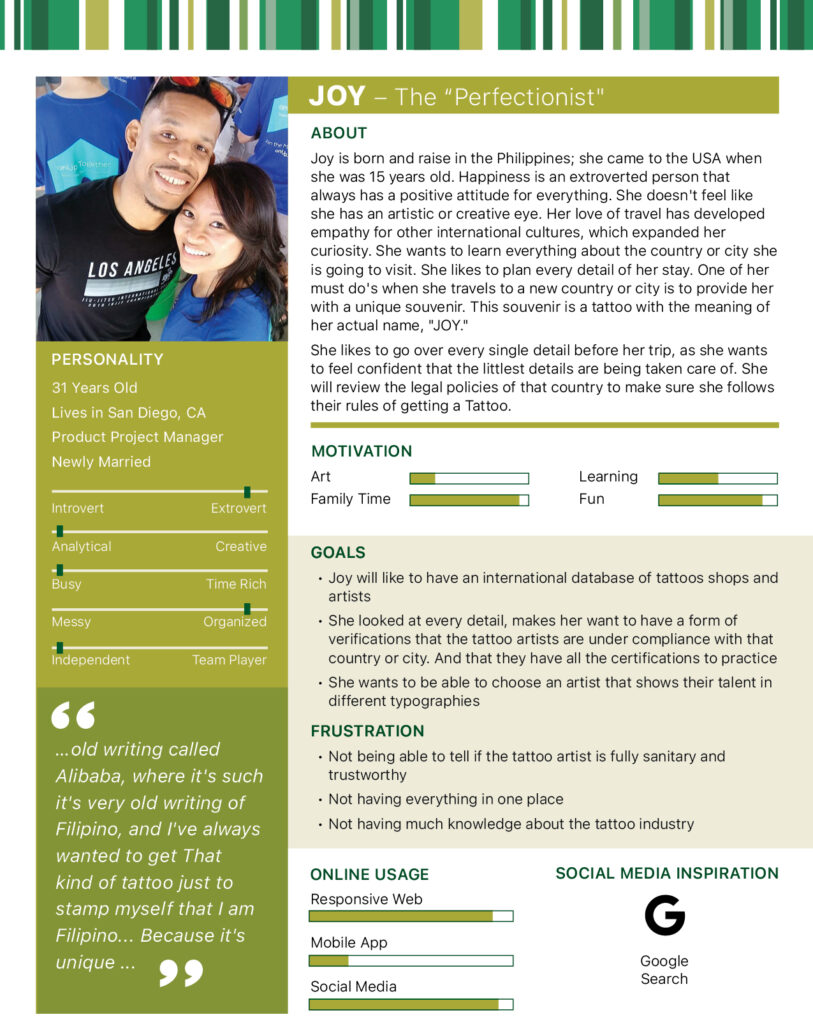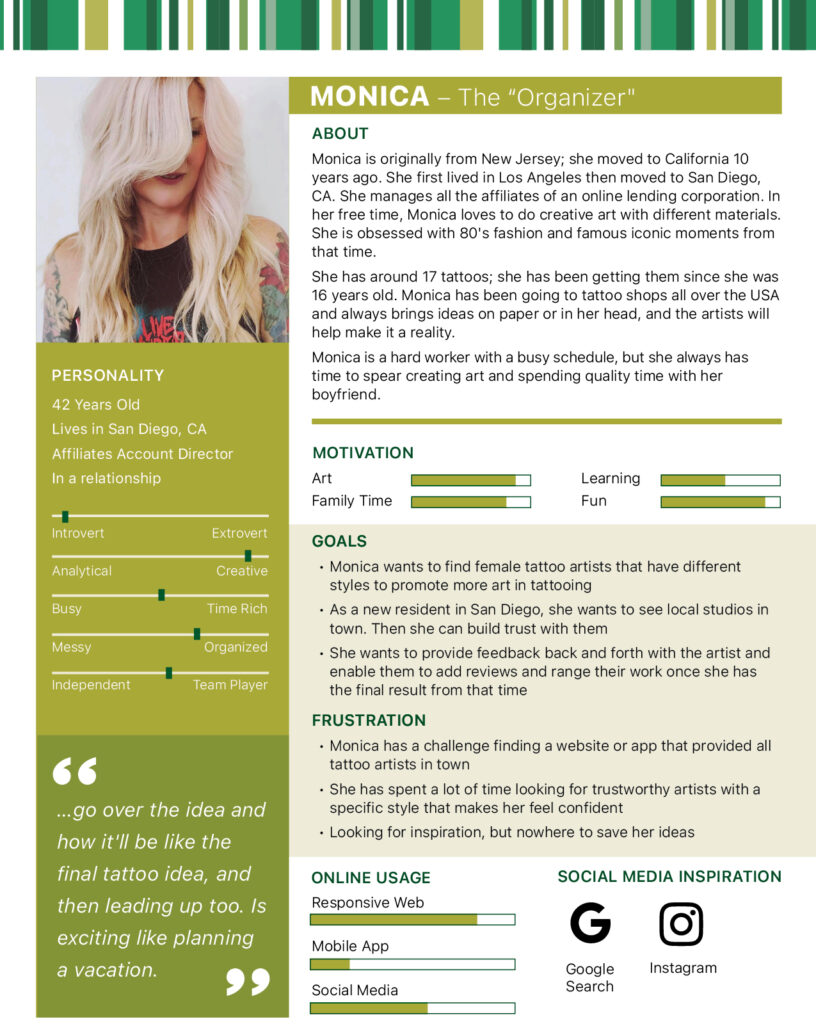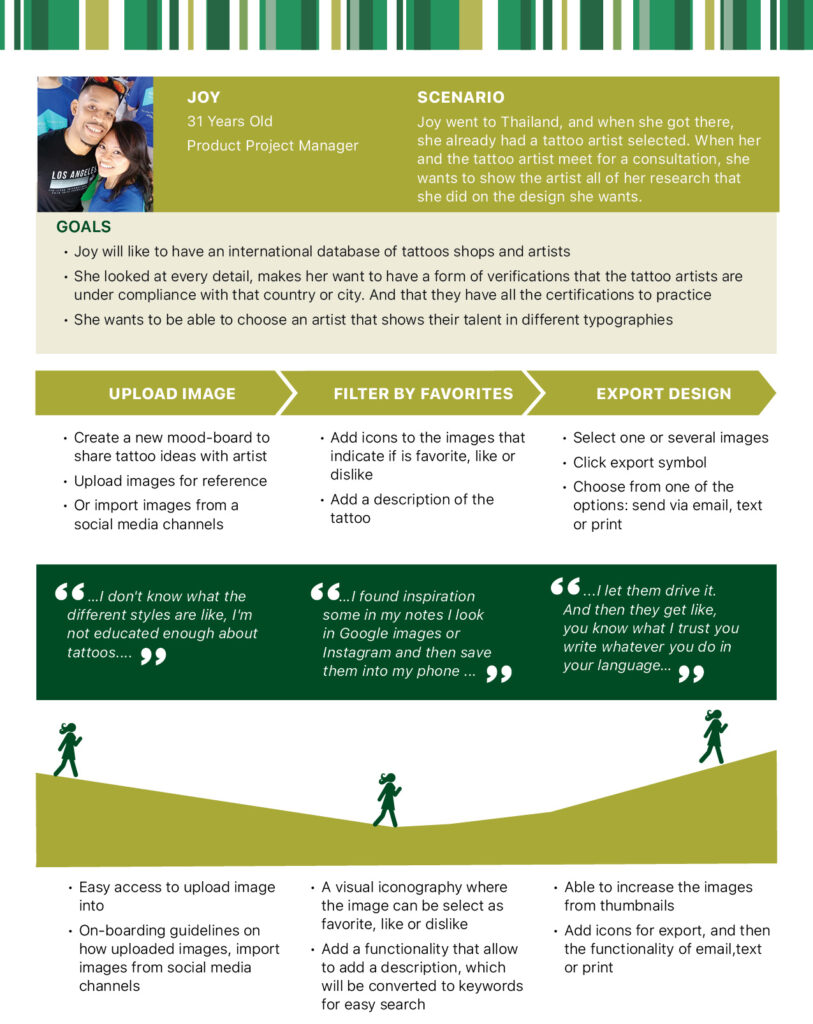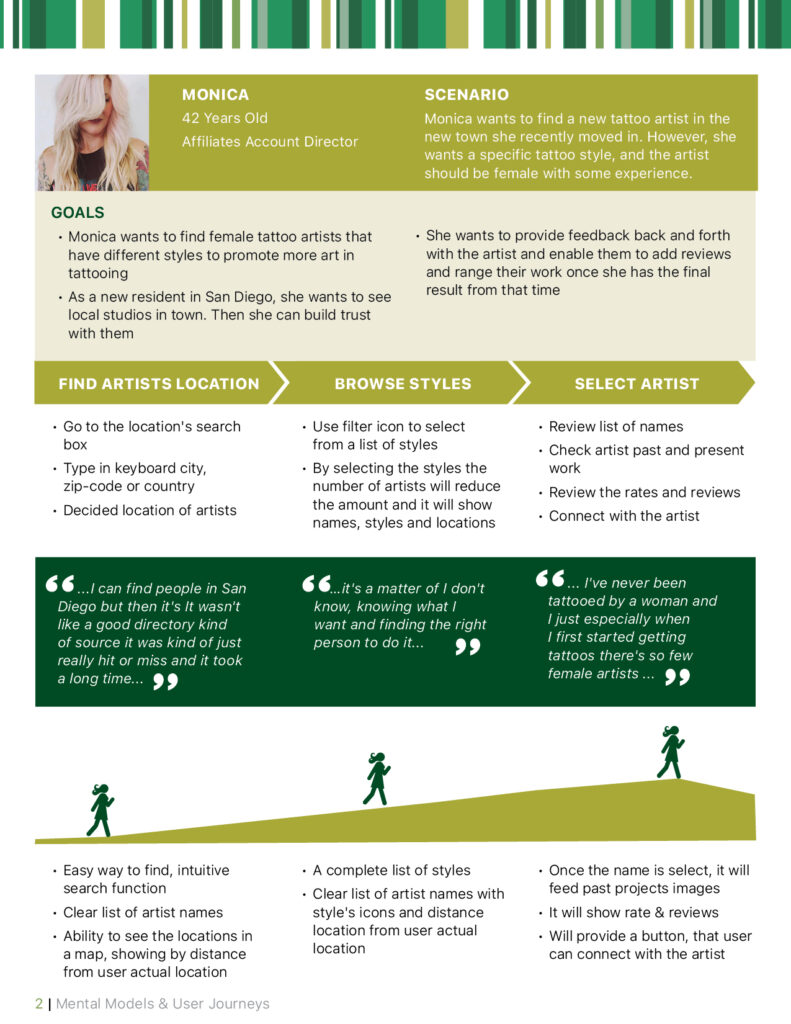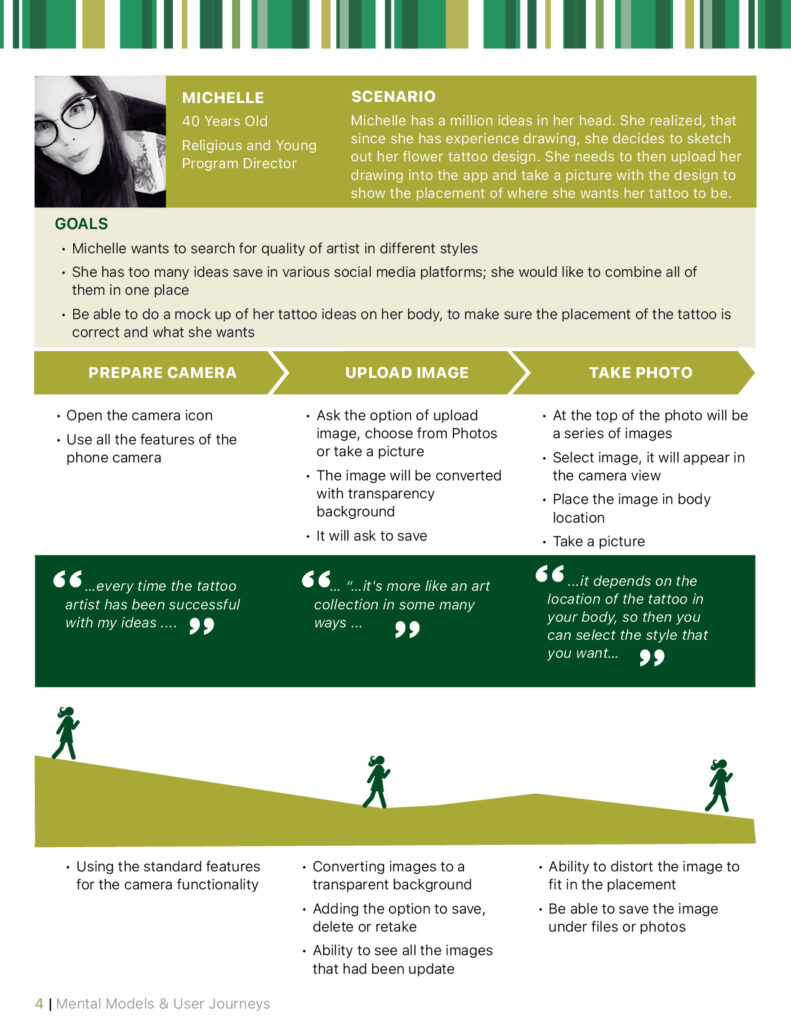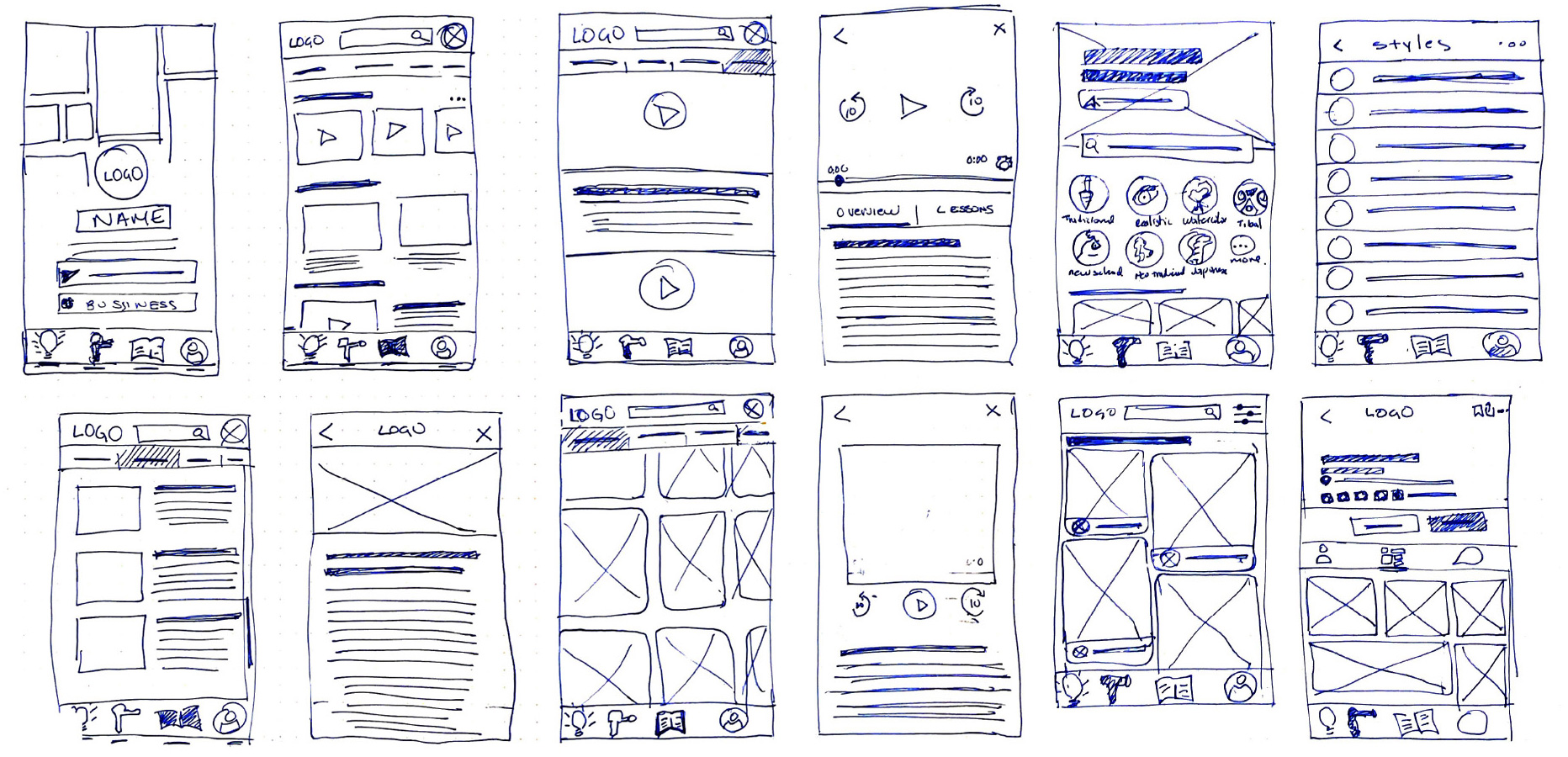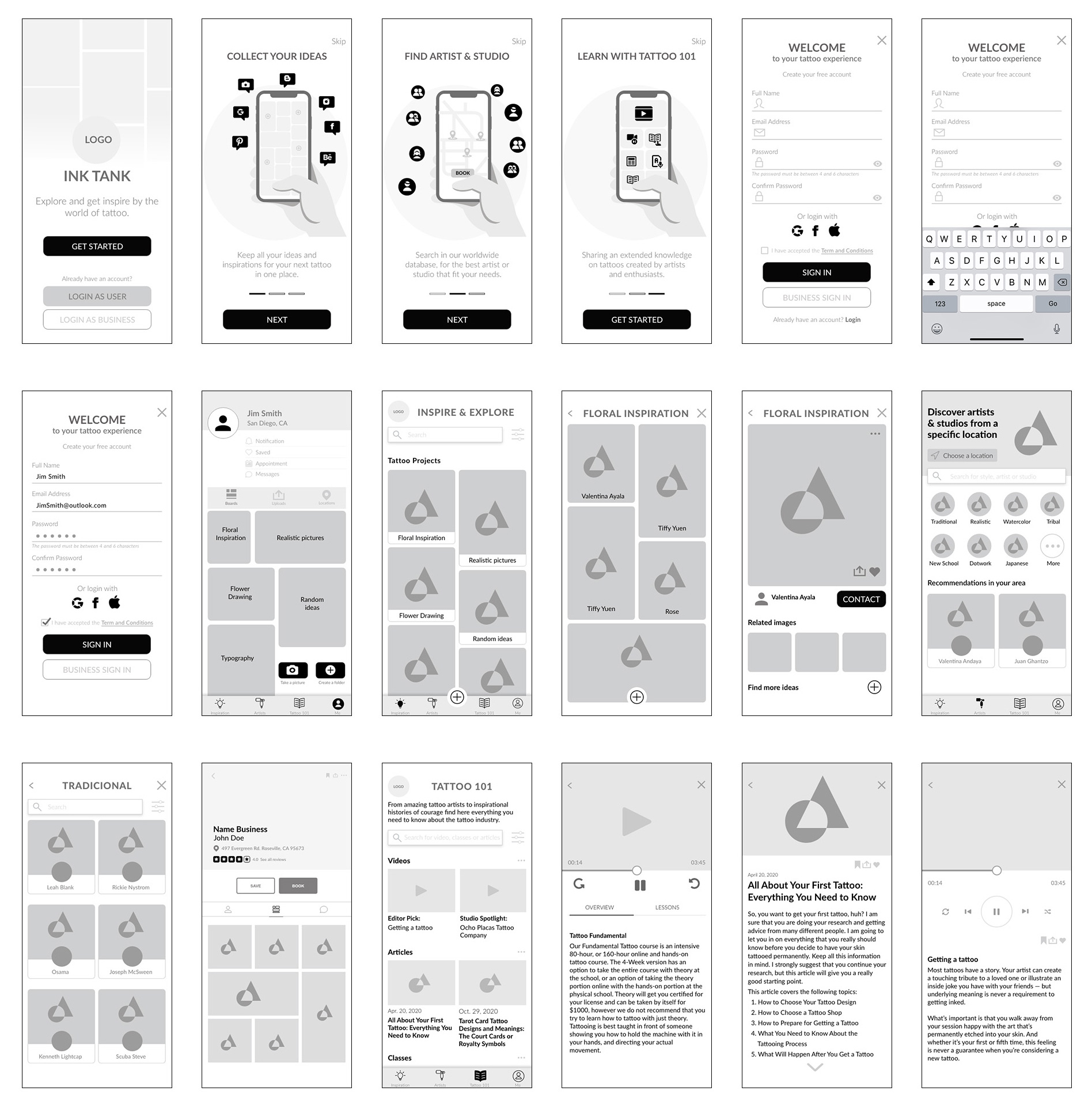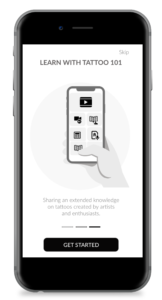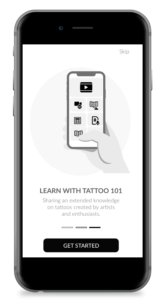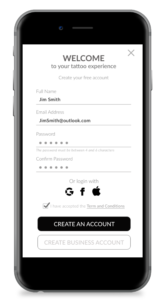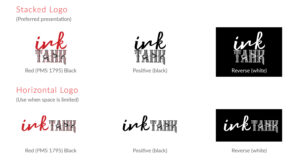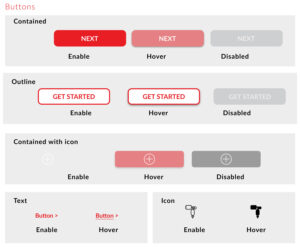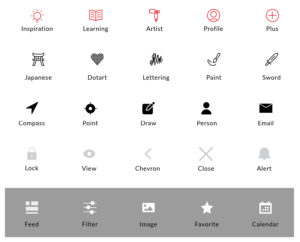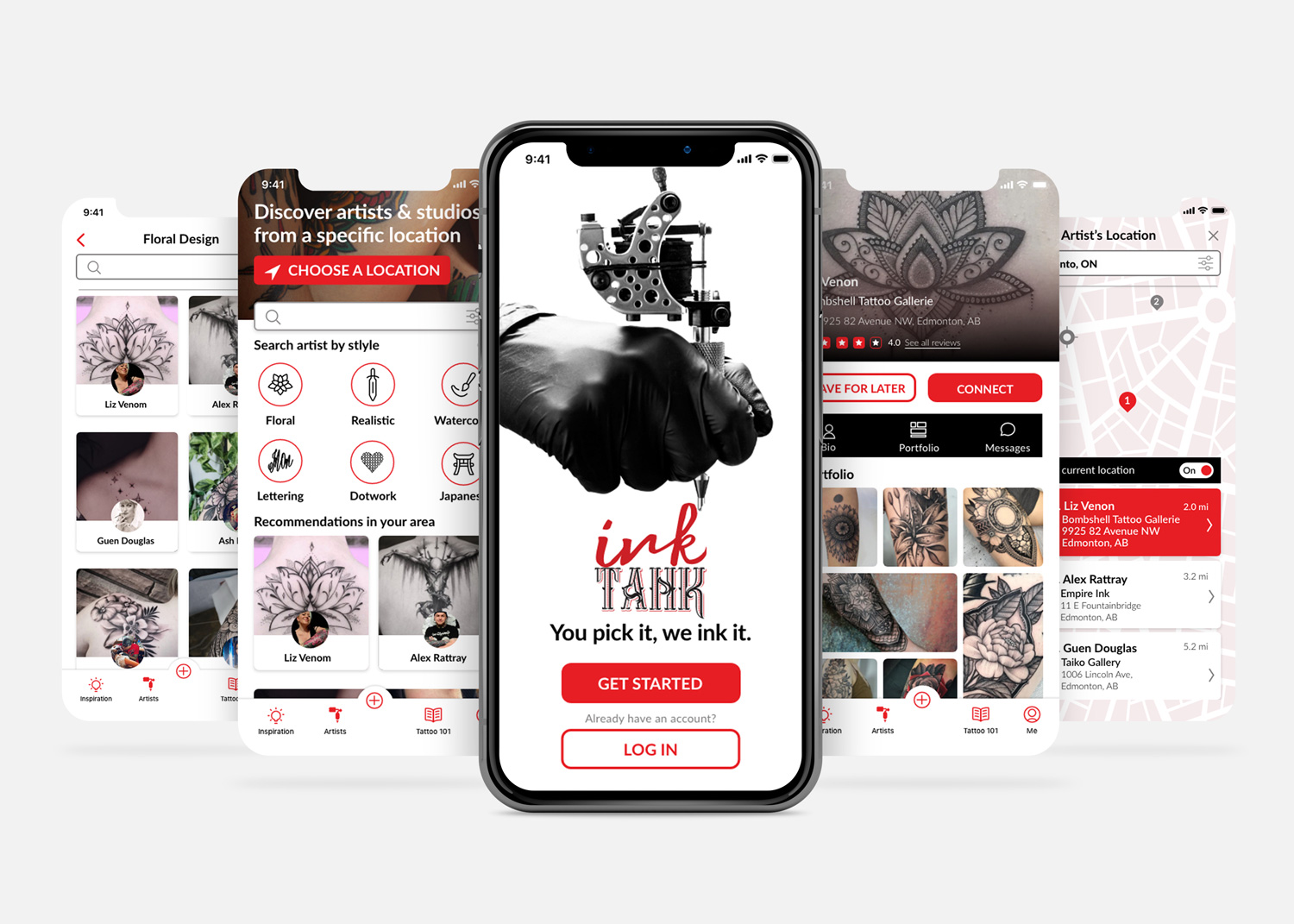Getting a tattoo is a significant personal decision, and the process of finding the right design and artist can be overwhelming due to the numerous options available. In the United States alone, people spend over $1.65 billion annually on tattoos.
Despite the industry's size, there are very few mobile apps that effectively guide users through the tattoo process from start to finish. For this reason, I have decided to focus on a tattoo mobile app for my final UX assignment.
This digitally responsive app will help users learn about, explore, and gather inspiration for their tattoo journey. It will provide information on artists' and studios' skills, experiences, locations, and knowledge, while also educating users about the tattoo industry.
The app will serve as a one-stop service, allowing users to find answers to all their questions, choose their preferred artist, and book appointments easily.
